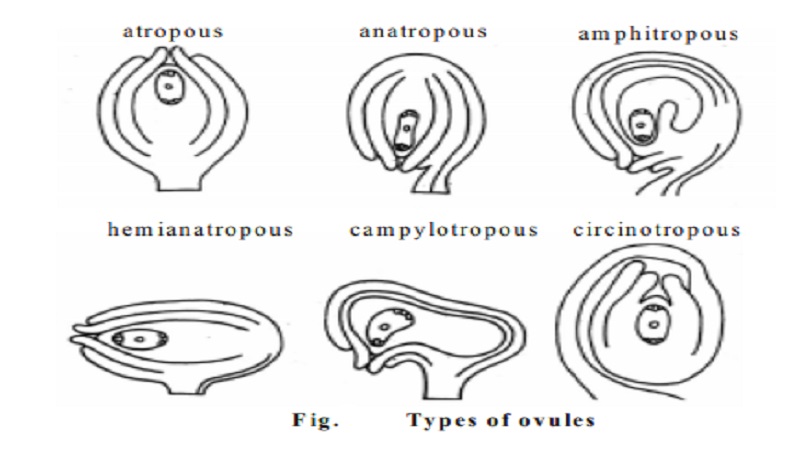Chapter:
Types of Plant Ovule

Megasporogenesis
Usually a single hypodermal initial known as primary archesporial cell is differentiated at the apex of the nucellus. The primary archesporial cell divides periclinally into outer primary parietal cell or primary wall cell and inner primary sporogenous cell.
The primary parietal cell may or may not divide. The primary sporogenous cell directly behave as megaspore mother cell. The megaspore mother cell undergoes meiotic division to form four megaspores. The four megaspores thus formed are arranged in an axial row forming a linear tetrad. Usually only one megaspore of the tetrad is functional and grows at the expense of other three, which degenerate. The functional megaspore enlarges and forms the embryosac.
Embryosac
The embryosac has three protoplasts of the egg-apparatus towards the micropylar end. Of the three cells constituting the egg-apparatus, one is the egg cell (female gamete) and the other two are known as the synergids. The egg cell, which is enlarged lies below the synergids. At the chalazal end are three antipodal cells. These antipodal cells have no definite function and soon getsdisorganized. In the centre of the embryosac is the secondary nucleus.
Types of ovule
There are six types of ovules.
1. Orthotropous or atropous ovule (ortho-straight, tropous - turn)
The body of the ovule is erect or straight. The hilum, chalaza and the micropyle lie in a straight line e.g. Polygonum.
2. Anatropous ovule (ana - backward or up, tropous - turn)
The body of the ovule becomes completely inverted during the development so that the micropyle lies very close to the hilum (eg) Gamopetalae members.
3. Hemi-anatropous or hemitropous ovule
The body of the ovule is placed transversely at right angles to the funicle. The micropyle and chalaza lie in one straight line e.g.Ranunculus.
4. Campylotropous ovule (kampylos - curved)
The body of the ovule is curved or bent round so that the micropyle and chalaza do not lie in the same straight line. e.g.Leguminosae.
5. Amphitropous ovule
The curvature of the ovule is very much pronounced and the embryosac also becomes curved e.g. Allismaceae, and Butomaceae.
6. Circinotropous ovule
The nucellus and the axis are in the same line in the beginning but due to rapid growth on one side, the ovule becomes anatropous. The curvature continues further and the micropyle again points upwards (e.g.) Opuntia.
Related Topics